
Lynx
The lynx is a timid animal of the cat family that lives primarily on small mammals and birds. It can…
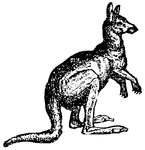
Kangaroo
Kangaroos are found in Australia, New Guinea and Tasmania. They have powerful rear legs and a muscular…

Spider Monkey
The spider monkey uses its tail in climbing. It uses its tail also to feel with, and to seize small…

Fox
The fox is characterized chiefly by its pointed muzzle, short legs and its bushy tail. During the day,…

Jackal
Similar to the fox in appearance, but without the bushy tail. They are found in Africa and S. Asia.…

Wolverine
Wolverines can be found in North America. They are fierce short animals that will attack just about…

Kinkajou
The kinkajou lives in S. America and spends most of its life in trees. It hunts at night for insects…

Seal
The seal is an aquatic mammal, whose limbs are formed into flippers. The tail tapers at the end of the…
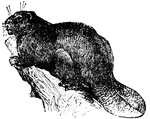
Beaver
The beaver is distinguished from all other rodents by its flat and scaly tail. Its hind feet are webbed,…

Kangaroo
Kangaroos are found in Australia, New Guinea and Tasmania. They have powerful rear legs and a muscular…

Opossum
The opossum is nocturnal and arboreal. At night it searches for insects, birds, eggs, fruit, etc. It…
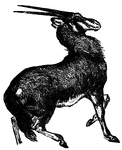
Oryx
The oryx is a native of S. Africa. It is one of the fastest animals in that region. It is similar in…

Seahorse
The seahorse is the only fish as yet known to have a prehensile tail. It has been found in the Hudson…

Lyre bird
Lyre-bird, an Australian bird, the male of which has the tail feathers arranged to look like a lyre.

Magpie
A bird of the crow family, closely related to the jays but distinguished by having a much longer and…

Salamander
In the land salamander, the body is black and warty with long irregular yellow spots distributed over…

Skink
A scaled, harmless lizard of the Scincidae family. Some have brilliant blue stripes running along the…

Iguana
Iguanas are characterized by a very large thin dew lap under the neck, a double row of small palatal…
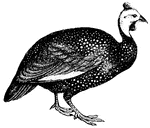
Guinea Fowl
Guinea fowls have small heads for their size; beak and neck short; the tail equally short and drooping.

Peacock
At the commencement of spring the male displays to the females all the splendor of his plumage; he struts,…

Cuckoo
Cuckoos have elegant shapes; beaks almost as long as the head, compressed, and slightly curved; the…
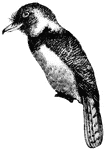
Barbet
Cuckoos have elegant shapes; beaks almost as long as the head, compressed, and slightly curved; the…

Whidah Finch
The long, drooping tail feathers of the male Whidah finch in the breeding season give them a singular…

Whidah Finch
The long, drooping tail feathers of the male Whidah finch in the breeding season give them a singular…

Swallow
The swallows are recognized by their long, pointed wings, forked tail and excessively short tarsi. (Figuier,…

Cliff Swallow
The swallows are recognized by their long, pointed wings, forked tail and excessively short tarsi. (Figuier,…

Swift
Swifts are related to swallows. The Swallows are recognized by their long, pointed wings, forked tail…
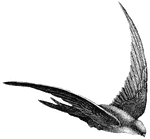
Salangane Swallow
The Swallows are recognized by their long, pointed wings, forked tail and excessively short tarsi. (Figuier,…

Lion
A lion when fully grown is nearly eleven feet long from nose to tip of tail and about four feet in height,…

Jackal
Similar to the fox in appearance, but without the bushy tail. The are found in Aftrica and S. Asia.…

Seal
The seal is an aquatic mammal, whose limbs are formed into flippers. The tail tapers at the end of the…

Peacock
"The animal struts about, and, lifting its tail in the air, spreads it like a fan, and seems to be very…

England
The herald for England bore Gulles three lions' legs razed silver, the paws downward. With the strange…

Lizard
Lizards are scaly reptiles, having two pairs of limbs and an elongated body, with a long, tapering tail,…

Four and Twenty Tailors
Four and twenty tailors went to kill a snail. The best man amongst them durst not touch her tail. She…
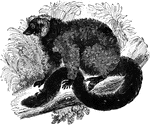
Red Lemur
"This lemur is noted for its brillant colorings, the greater part of the body being covered with a vivid…

Mourning Gibbon
The Gibbon stands about four feet high and are distinguished by their long arm. An ape because of the…
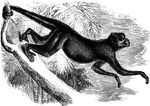
Spider Monkey
"The Greek word ateles signifies imperfect, and is applied to this genus in allusion to the absence…

White-Throated Sai
"Genus Sajou. These creatures are somewhat smaller, but less slender that the ateles: the tail…
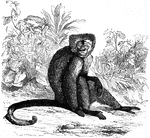
Weeper
"Genus Sajou. These creatures are somewhat smaller, but less slender that the ateles: the tail…

Collared Tee-Tee
"Genus Callithrix. The monkeys of this genus are called Sajous by some author. They…

Saimiri
"Genus Saimiri. The animals of this genus are but about ten inches in length and are the most…

Monk Saki
"The monkeys of this genus are marked by a short head, an angular muzzle, and a non-prehensile tail.…

Satanic Saki
"The monkeys of this genus are marked by a short head, an angular muzzle, and a non-prehensile tail.…

Galagos
"The head is large and round; the membranaceous ears remarkably large, and closed when the animal is…

White-Fronted Lemurs
"Genus Maki: Lemur. The makis are the proper lemurs, and are distinguished by thick, soft fur,…












